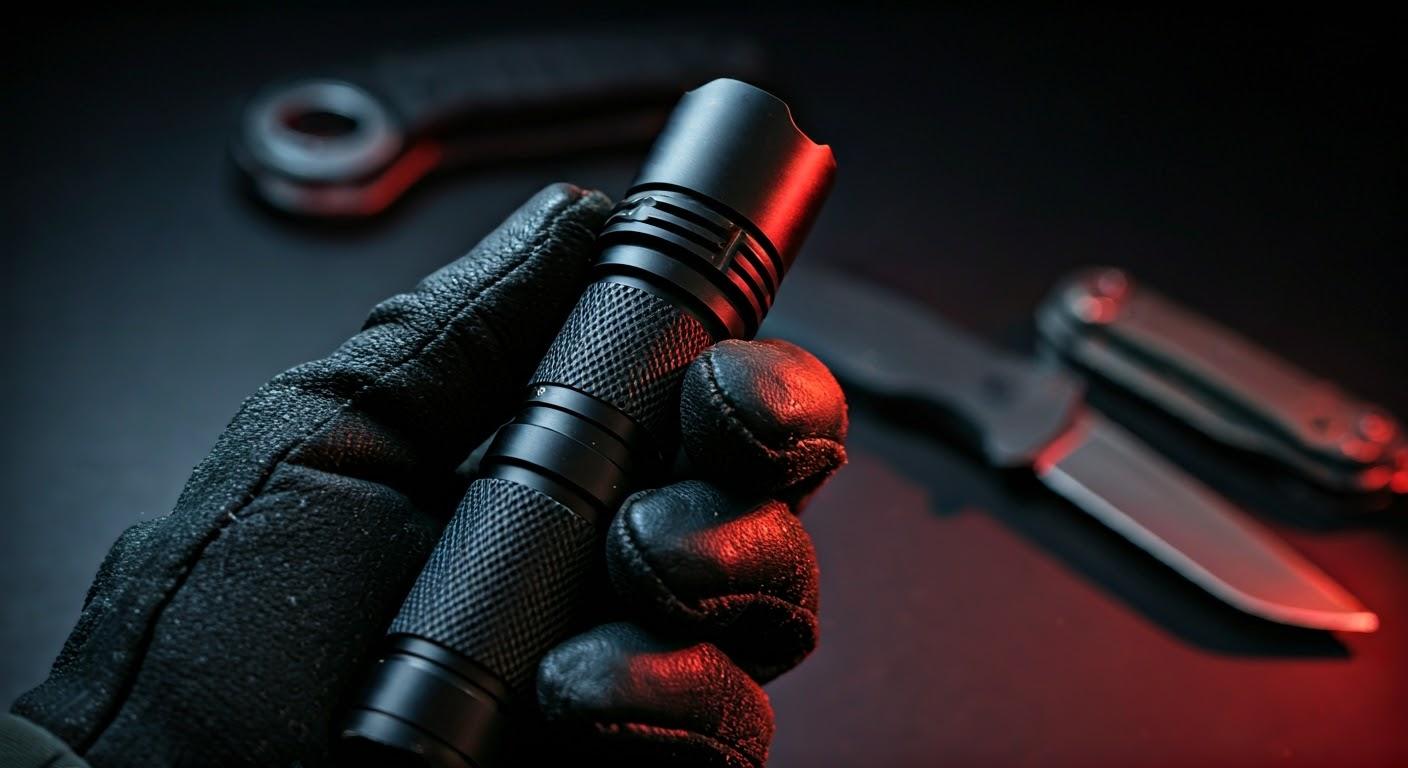Introduction
When choosing a flashlight, most people prioritize brightness, durability, and runtime. But one often-overlooked feature that plays a critical role in a flashlight's performance and safety is intelligent temperature control. This technology is designed to manage the heat generated during use, particularly in high-output flashlights that produce large amounts of light. In this article, we’ll explore how intelligent temperature control works, why it’s essential for flashlight safety, and how it can prolong the life of your flashlight.
What is Intelligent Temperature Control?
Intelligent temperature control (ITC) is a technology built into many modern flashlights that monitors and regulates the internal temperature of the flashlight while it’s in use. Flashlights, especially high-power LED models, can generate significant heat when running at their maximum output. Without a way to manage this heat, the flashlight could overheat, causing potential damage to the internal components, reduced performance, and even posing safety risks.
With ITC, the flashlight’s circuitry monitors the temperature in real time. If the temperature reaches a threshold that could cause damage, the flashlight automatically adjusts its output, either by reducing the brightness or by cycling through different modes to allow the light to cool down. This intelligent feature prevents the flashlight from overheating, ensuring it operates within safe parameters, even under heavy use.
Why Flashlights Overheat and the Importance of Temperature Regulation
Flashlights, particularly those with powerful LED emitters, produce light by converting electrical energy into light energy. This process inevitably generates heat. The more powerful the flashlight, the more heat is produced. For example, a flashlight with 1000+ lumens running at full brightness will generate much more heat than a low-lumen flashlight.
Without proper temperature control, the excessive heat can:
- Damage the LED: Overheating can damage the LED chip, leading to a reduction in light output or even total failure of the light.
- Degrade Battery Performance: High temperatures can cause the internal components of the battery to degrade, leading to reduced battery life or, in some cases, dangerous situations such as leakage or rupture.
- Cause Safety Hazards: A flashlight that overheats without any regulation can become too hot to handle, potentially causing burns or discomfort during use. Additionally, excessive heat can be a fire hazard if the flashlight is placed in contact with flammable materials.
- Reduce Overall Efficiency: A flashlight that overheats will not be able to perform at its peak for long periods, which could lead to a lack of reliability, especially in critical situations.
By controlling the temperature, intelligent temperature control helps avoid these issues, keeping your flashlight safe to use while ensuring its longevity.
How Intelligent Temperature Control Works
The technology behind ITC varies slightly between models, but the core concept is similar. Here’s a simplified breakdown of how it functions:
-
Heat Detection: The flashlight contains temperature sensors that constantly monitor the internal temperature. These sensors are connected to the flashlight’s electronic circuit, allowing it to gather real-time data on how hot the light is running.
-
Automatic Output Adjustment: Once the temperature exceeds a certain threshold, the flashlight automatically adjusts the output of the LED. This can include reducing the brightness or switching to a lower mode that generates less heat.
-
Dynamic Cooling: In some models, intelligent temperature control goes beyond reducing brightness. For example, certain flashlights will cycle through different modes or reduce the output gradually to allow heat to dissipate, preventing the flashlight from shutting down completely.
-
Enhanced Performance: Some flashlights will allow you to run at higher brightness levels for longer periods by intelligently modulating the output as the flashlight heats up. This allows you to still benefit from high power without risking overheating.
Key Benefits of Intelligent Temperature Control
-
Prevents Overheating and Damage: The primary benefit of ITC is that it prevents the flashlight from overheating and causing damage to its internal components, like the LED and battery. With temperature regulation in place, the flashlight can handle prolonged use without the risk of malfunction or failure.
-
Increases Flashlight Lifespan: Overheating is one of the primary causes of flashlight failure, but with ITC, the flashlight can continue to perform optimally for longer. By preventing excessive heat buildup, ITC helps maintain the integrity of the flashlight, ensuring it lasts through more cycles of use, reducing the need for repairs or replacement.
-
Improves Safety: Flashlights that get too hot can be dangerous to use, especially in tactical or emergency situations where the user might be holding the flashlight for extended periods. ITC ensures that the flashlight remains cool enough to handle, eliminating the risk of burns or other safety concerns.
-
Optimizes Runtime: Flashlights with intelligent temperature control can maintain peak performance for a longer period. By managing heat levels, ITC helps prevent the flashlight from cutting out prematurely due to overheating, ensuring that you have consistent brightness when you need it most.
-
Reliable for Heavy Duty Use: For those who need to rely on their flashlight in challenging environments—such as in law enforcement, search and rescue, or military operations—ITC ensures the flashlight can withstand long hours of use without losing its reliability or safety. Flashlights that can handle prolonged use without overheating are invaluable in critical situations.
Applications of Flashlights with Intelligent Temperature Control
Flashlights with ITC are highly versatile and can be used across a wide range of scenarios. Some of the primary applications include:
- Outdoor Adventures: Whether you’re hiking, camping, or exploring, ITC helps ensure that your flashlight can perform reliably for long durations in the wild.
- Tactical and Law Enforcement: Law enforcement and military personnel rely on their flashlights during long shifts. ITC helps prevent the flashlight from overheating during use in the field, making it a valuable tool for tactical operations.
- Search and Rescue: Search and rescue teams often work in challenging conditions at night. A flashlight that won’t overheat under pressure allows them to continue searching for long periods without having to worry about equipment failure.
- Emergency Preparedness: Flashlights with ITC are a must-have in emergency preparedness kits. They provide peace of mind knowing that the flashlight can operate safely and effectively during a disaster or power outage.
Conclusion
Intelligent temperature control is a crucial feature that enhances both the safety and performance of modern flashlights. By automatically adjusting the flashlight's output to regulate temperature, ITC helps prevent overheating, protects the flashlight’s components, and ensures longer, safer use. Whether you’re using your flashlight for daily tasks, outdoor adventures, or tactical operations, intelligent temperature control provides the reliability and peace of mind you need for all your lighting needs.
If you’re in the market for a flashlight, consider opting for one equipped with intelligent temperature control for added safety and longevity. It’s a small feature with a big impact on the overall performance and lifespan of your flashlight.


















